8. Amour (Michael Haneke, 2012)
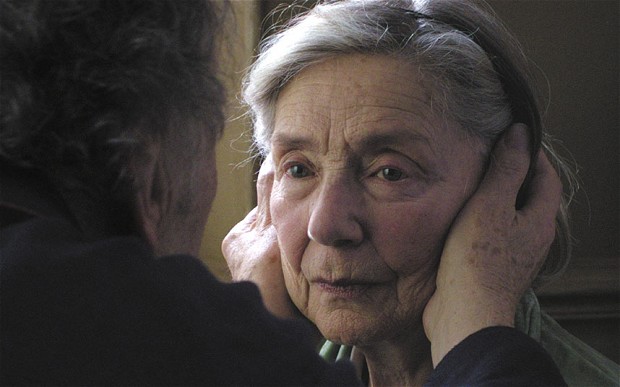
Michael Haneke, like some of the other directors on this list, cannot be accused of being overly sentimental or emotional. His camera gazes in an almost sterile and unfeeling way, more concerned with showing the absolute truth of its subjects rather than telling the audience how to feel.
Works like Funny Games and Caché are perfect examples of the cold style the Austrian director has become known for. Yet with Amour, Haneke has presented a different kind of story: one about the inevitability of death and the struggle of coming to terms with this fact of life.
Anne and Georges (Emmanuelle Riva and Jean-Louis Trintignant) have been married for many years. Formerly piano teachers, they are now retired and live in Paris. One day during breakfast, Anne has a stroke. She undergoes a surgery which leaves her right side paralyzed and confines her to a wheelchair. Honoring her wishes not to take her to a nursing home, Georges becomes her caretaker.
Although it seems she may recover, Anne soon suffers a second, more debilitating stroke that leaves her a shadow of her former self. Georges hires a caretaker, who proves to be abusive towards Anne and is soon dismissed, leaving him with the demanding task of caring for his ailing wife. In one particularly distressing scene, Georges tries in vain to feed Anne, who spits the food back at him. Frustrated, he hits her, and immediately feels anguish and shame for his actions.
Watching the relationship of these elderly couple come to a bitter end is not an easy task. Haneke brings the viewer close to the action on screen, scarily giving us room to breathe as the characters inch slowly towards their inevitable demise. And yet, unlike his other works, Amour is an emotional voyage as well as a cerebral one. In the end, he seems to suggest, even our love for one another isn’t enough to prevent the pain and hurt that comes from the slow walk of time.
7. Mary and Max (Adam Eliot, 2009)
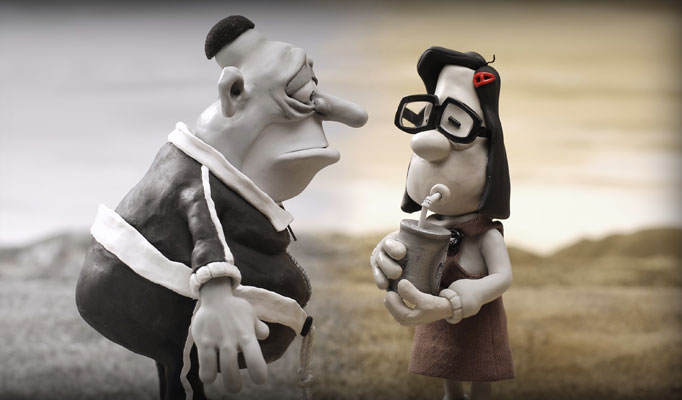
Adam Elliot is one of the most exciting figures working in animation today. Although he flies under the radar compared to other filmmakers of his generation, his auteurist work has received critical acclaim from critics and filmmakers across the world. Off all his five films, arguably the most well known is his 2009 opus Mary and Max.
In 1978, Mary is a young girl from Mount Waverly, Australia. She’s a lonely girl: her parents neglect her and a birthmark on her face prevents her from making friends. Desperate for human contact, she finds a New York City phone book and randomly picks a name and address to send a letter to.
Its recipient is Max, a 44-year-old man suffering from obesity and emotional and mental health issues that prevent him from forging close relationships with other people. He is alarmed by Mary’s letter and even has an anxiety attack, but nevertheless decides to write back to her. This sparks a long and heartfelt relationship that takes these two people on a journey through life that’s full of hardship, sadness, and self-loathing.
Finding that one person who gets you, who sees you just the way you are and loves you for it, is one of the most difficult things to find as humans. The genius of Elliott’s vision is showing that, despite our differences and the distanced between us, the only thing keeping us from fully understanding and appreciating each other is ourselves.
6. The Elephant Man (David Lynch, 1980)
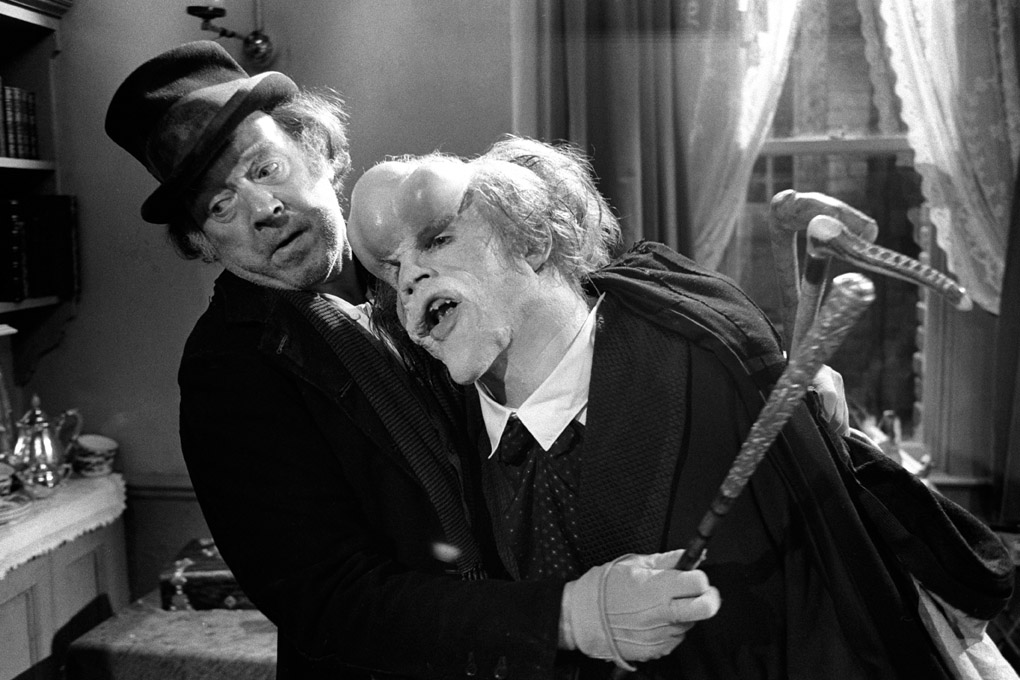
David Lynch is not a man often associated with sympathy. The filmmaker who brought works like Eraserhead, Blue Velvet and Twin Peaks into the world is best known for his twisted and macabre subject matter. And yet with his second feature, Lynch made his most touching and feature yet, focusing on a character most of us have probably heard of before: The Elephant Man.
Joseph Merrick (frequently called “John”) is a horrifically deformed man kept in a traveling freak show in Victorian era London. He is found by Frederick Treves (Anthony Hopkins), a surgeon at the London Hospital who frees him from captivity and takes him with him. The hospital’s Governor is against housing him, claiming Merrick is an “incurable” and demands that he be removed, but changes his mind when Merrick recites the 23rd Psalm to him.
For the first time in his life, the poor man experiences compassion and friendship. He spends his days conversing with guests who come to visit and building a model of the cathedral he can see for his bedroom window. As kind as the good doctor is, however, the greater Victorian society is not as understanding.
During a debate about granting Merrick residency at the hospital, Merrick is kidnapped by and brought back to the circus. When he escapes, he is chased through London’s Liverpool station and gawked at by the passengers. “I am not an animal! I am a human being!” he shouts, a howl of anguish from the depths of a tortured soul.
The real and short life of Joseph Merrick was a tragic one, and yet Hurt and Lynch manage to give the man dignity and humanity, making him more than his deformity. In the film’s final moments, as Merrick drifts off to sleep, one hopes he finally found the peace he was looking for.
5. Au hasard Balthazar (Robert Bresson, 1966)
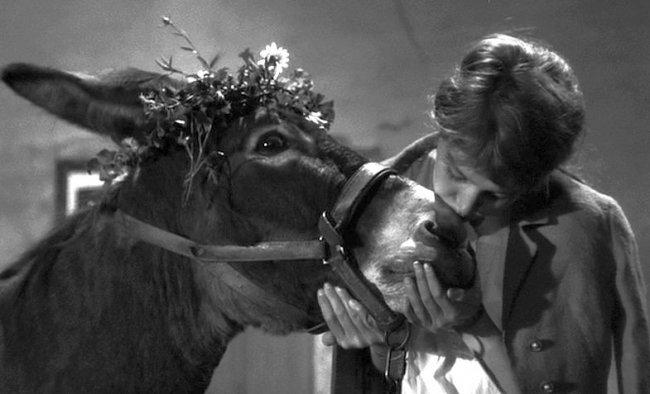
Some are born to suffer. Robert Bresson, like so many of the great directors, knew this well. Unlike many other filmmakers, however, he chose to focus one of his films not only on humankind, but on the animal world as well.
Balthazar is a donkey living in somewhere in France in the mid 20th century. He is cared for by Marie (Anne Wiazemsky), a quiet and reserved farm girl. They are misfits and outcasts in a world full of cruelty and sadism, and they have only each other.
Balthazar is passed around between different owners (all of whom treat him terribly) and he eventually comes under the ownership of Gérard (François Lafarge), a cruel man and leader of a gang of local ruffians. Gérard treats both Balthazar and Marie (who is infatuated with him) very poorly, taking advantage of these wretched creatures and bending their bodies and spirits to his will.
The film is not an easy sit, with the donkey’s brays and cries replacing the monologues and outpouring of human emotion one might find in the filmography of other films. Yet despite his lack of speech, the story of Balthazar is as moving and tragic a tale as any that revolves around the affairs of humans.
4. Dancer in the Dark (Lars von Trier, 2000)
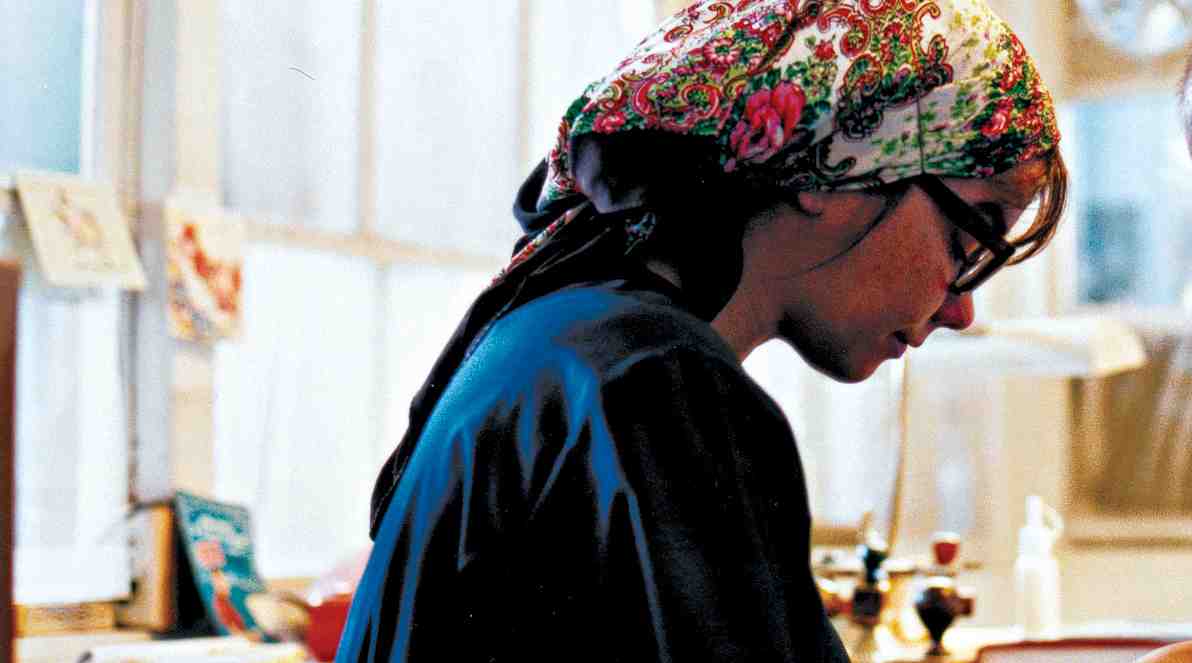
The films of Lars von Trier are rarely what you could call “happy” films. The Danish director has long excelled in making films that show his tortured and battered characters living in a world that is either cruel or indifferent toward them.
Selma (Björk) is a Czech immigrant living in the United States with her son Gene. She works at a local factory and spends her free time preparing to play Maria in a local theater production of The Sound of Music and watching musicals with her friend Kathy (Catherine Deneuve).
Unable to afford her own house, she and Gene live in a trailer on the property of Bill Houston, a policeman in town. Unbeknownst to most, Selma (and Gene) suffer from a hereditary degenerative eye disease that slowly renders them blind. Although Selma has resigned herself to a life in darkness, she is saving up what little money she has to pay for surgery that will allow Gene to keep his sight.
All seems to be going well, until one night when she tells Bill (David Morse) about the money she’s been saving up. Strapped for cash, Bill takes advantage of Selma’s worsening eyesight and steals the money from under her nose. She finds out and demands he return it, and he tells her she’ll have to kill him for it.
The way von Trier disassembles and pieces together the American musical form is incredibly subversive and thoughtful. Although the character of Selma may escape into her world of song and dance, real life is rarely as kind, as evidenced by what happens to her in the final act of the film. In showing the cruel fate in store for this woman, the director lays bare the failings of the American Dream and the inherent dishonesty of Hollywood filmmaking, especially in the musical.
3. Tokyo Story (Yasujirō Ozu, 1953)
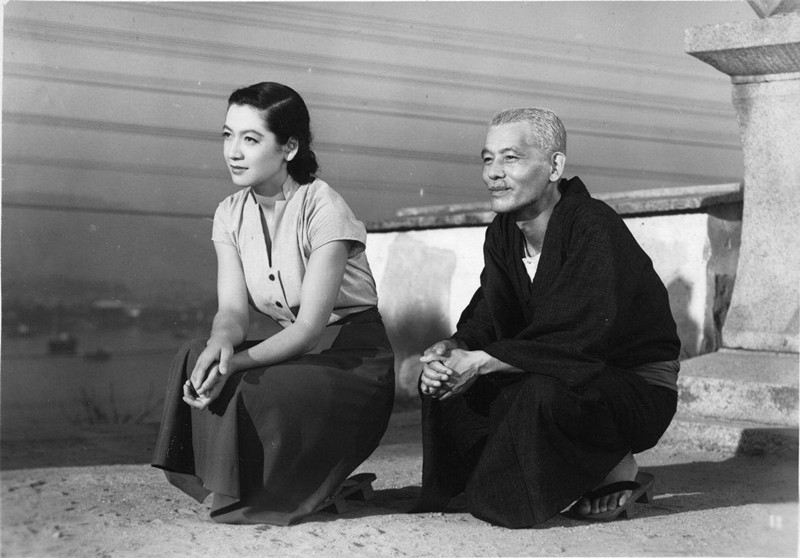
Yasujirō Ozu is one of the most compassionate and humanistic of filmmakers. His habit of shooting actors as if the viewer were right in the middle of the scene instead of merely filming over their shoulders gives his work a sense of intimacy and closeness. Although he passed away in 1963 at the age of 60, his work has lived on and enjoyed considerable acclaim. Of all his work, however, it is generally agreed that Tokyo Story is his most famous and best work.
Shūkichi and Tomi Hirayama (Chishū Ryū and Chieko Higashiyama) are a retired couple living in southwest Japan with their schoolteacher daughter Kyōko. Shūkichi and Tomi travel to visit their son (a pediatrician) and daughter (a hairdresser) living in Tokyo.
To their dismay, both of their children are preoccupied with matters of their work and social lives, and have no time to give to their parents. Their children leave them their own devices, forcing them to wander the streets of the Tokyo metropolis by themselves.
Shūkichi and Tomi visit restaurants and hot spring spas by themselves, being told by their daughter that she must use their bedroom for a meeting rather than spend time with her parents. The only person who pays any mind to the elderly couple is Noriko (Setsuko Hara), the widow of their middle son lost in the Second World War.
It’s a heartbreaking story, and one all too common in our world: as we get older, our children have less and less time for us and become more of a nuisance than a necessity to them. Although Ozu never got to grow old like the rest of us, his powerful and sympathetic work lives on forever, sharing universal tales like Tokyo Story with the next generation and all the generations to come.
2. Bicycle Thieves (Vittorio De Sica, 1948)
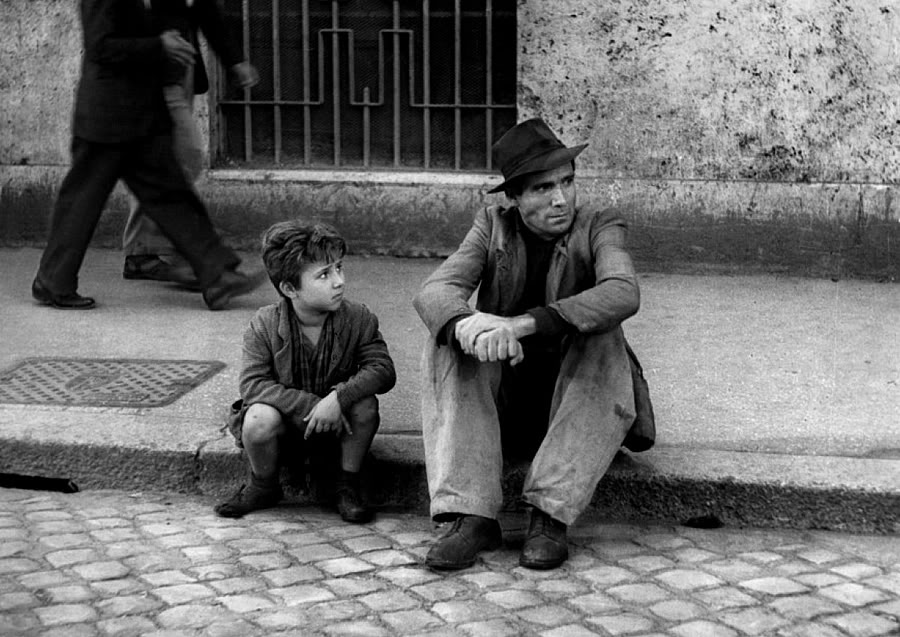
Europe in the aftermath of the Second World War was a sad and gloomy place. Many countries, Italy included, were left to pick up the pieces of their broken nations and move forward amid the chaos and poverty of the postwar period. Vittorio De Sica knew this, and sought to create a film movement in response to the candy-coated sweetness of Hollywood, a movement that would become known as Italian Neorealism.
Antonio and Bruno live in Rome in the years following the Second World War. They are a poor family, with Antonio desperately searching for work to support his wife and newborn baby. He is offered a job posting advertisements on walls, but requires a bicycle to move around the city. He pawns his wife’s dowry bedsheets and soon he is riding around the city hanging up signs.
Then his bike is stolen. With the fate of his family in jeopardy, Antonio takes Bruno with him on an odyssey through the crowded and unforgiving streets of the Eternal City in search of the missing bicycle. Along the way Antonio struggles to keep his spirits up for the sake of the boy, who fails to fully grasp the severity of their situation.
Finally, the thief is located, but to Antonio’s frustration his neighbors insist he is a good lad and he could not have taken the bicycle because they can vouch for his whereabouts. Finally, in an act of desperation, Antonio attempts to steal another bicycle and is apprehended by the citizens of Rome.
As the final moments of the film roll, the realization that the dire circumstances of this family are far from over overwhelm the viewer. The shame, sadness, and overwhelming feeling of helplessness experienced by Antonio and Bruno becomes our own, making for one of the most powerful works cinema has to offer.
1. Grave of the Fireflies (Isao Takahata, 1988)
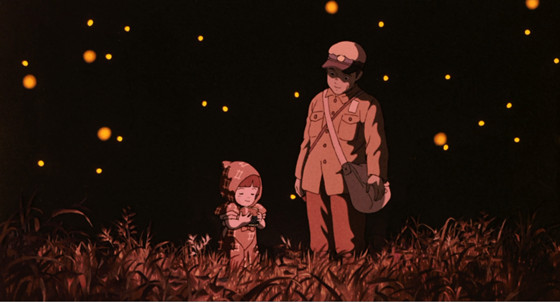
One of the great misconceptions of filmmaking is that animation is primarily a medium for children. From the Walt Disney Company to Aardman Animation, hundreds to films have been made within the medium, with stories ranging from fairy tales to dystopian science fiction and everything in between.
Seita and Setsuko are brother and sister living in Kobe, Japan in the last days of the Second World War. After an Allied firebombing destroys their house and kills their mother, they leave Kobe and move in with a distant aunt.
Their aunt is happy to aid them at first, but as supplies grow low and more and more refugees swarm into the house, she begins to resent their presence. Seita and Setsuko leave the house and relocate to a bomb shelter; they soon resort to thievery to replenish their supplies of food.
With a film like this one, it’s best not to describe too much, lest the overwhelming and crushing experience of actually watching be diminished for the viewer. Grave of the Fireflies is one of the hardest films to sit through, and yet it is one of the most necessary. Only by understanding the horrors we inflict on each other can we begin to grow out of our worst traits.